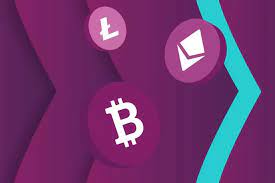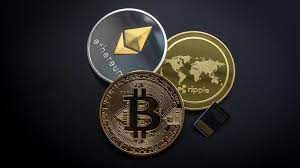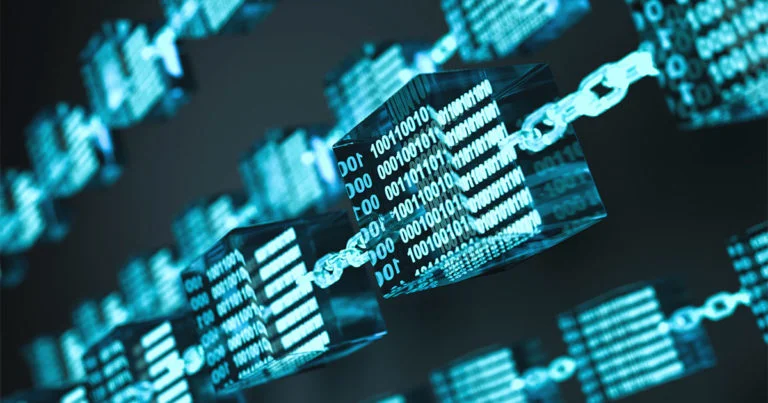Hello!
Data science is a central part of virtually everything — from business management to conducting national and local authorities. In its heart, the topic targets harvesting and managing info so organisations may operate easily.
 For quite a while now, data scientists have been not able to share, secure and authenticate data integrity. As a result of bitcoin being too hyped, blockchain, the technology which underpins it, captured the cautious eyes of information experts. Bitcoin touted the decentralised ledger within an open minded and transparent network that’s secured by strong cryptographical calculations.
For quite a while now, data scientists have been not able to share, secure and authenticate data integrity. As a result of bitcoin being too hyped, blockchain, the technology which underpins it, captured the cautious eyes of information experts. Bitcoin touted the decentralised ledger within an open minded and transparent network that’s secured by strong cryptographical calculations.
Well, when you take a look at blockchain in relation to bitcoin, its consequences to information science feels thin.
But when you look at this as a public dispersed ledger for permanent record keeping and also a system of contracts, then it is possible to observe how it relates to large data analytics.
Here are some of the many reasons why data scientists are enticed by blockchain:
Fostering Data Traceability
 Blockchain is merely a program that fosters peer reviewed relationships. As an example, if a printed account insufficiently describes a methodology, some peer could review the procedure and find out how the results have been obtained.
Blockchain is merely a program that fosters peer reviewed relationships. As an example, if a printed account insufficiently describes a methodology, some peer could review the procedure and find out how the results have been obtained.
Even the ledger’s transparent channels might help anybody understand what information is reliable to be used, in which it came out, the way to keep it, that does the upgrade and how to utilize it in an ethical way. To put it simply, it is possible to trace information on a distributed electronic ledger in the entrance point to the departure.
Real-Time Analysis
The capability to track changes in actual time is deemed the best means to discover fraudsters.
For quite a while, it had been regarded as impossible to do that. As a result of the spread nature of blockchain, many businesses can detect anomalies at a database quite early on.
Having the ability to observe data changes in real time is a characteristic we have each experienced in Documents. Such as the stated method, blockchain also enables two or more people to work on precisely the exact same parcel of info in 1 go.
Generating Trust
Trust is getting to be a rare quality to find today, particularly where lots of duties are abandoned to biased central government. Putting too much energy from the control of systems using an only point of collapse has ever been considered dangerous.
 Many businesses don’t allow other parties to use their information because of lack of confidence. This makes info sharing almost hopeless. With trustless surgeries of blockchain, organisations can easily collaborate with sharing a pool of data at their own disposal.
Many businesses don’t allow other parties to use their information because of lack of confidence. This makes info sharing almost hopeless. With trustless surgeries of blockchain, organisations can easily collaborate with sharing a pool of data at their own disposal.
Past the monetary world, some nations such as Venezuela have gone to sponsor blockchain-powered elections to prevent rigging and boost participatory democracy.
Easy Data Sharing
A simple and easy data flow may minimize reverses or even stop a company from stalling. Present paper documents present in offices are fairly tedious to utilize, particularly when essential data is required somewhere else. Sure, the documents can finally reach another section, but after having an inconveniently long time, plus a few copies may be edited and have lost in transit too.
 Data scientists have been thrilled by blockchain owing to its capacity to supply many individuals access to information simultaneously and in real time.
Data scientists have been thrilled by blockchain owing to its capacity to supply many individuals access to information simultaneously and in real time.
This electronic ledger is similar to a large pool with smaller pools in which a person with access is permitted to leap from 1 sub-pool into another. When data flows unrestricted to all components, the government process becomes compact.
Blockchain Improves Data Integrity
Within the last couple of decades, many businesses have been focusing on boosting their information storage capability. From the end of 2017, information storage was no more an issue. The issue has shifted to protecting and confirming the integrity of information.
This is now a massive issue for many companies and organizations because they harvest data from many facilities. Even internally produced information or that pulled from government offices might be incorrect. To add to this, additional sources of information like social websites can be wholly erroneous.
 Data scientists are currently relying on blockchain into authenticating and monitor data at each stage on a series. Its immutable security is among the chief drivers for its adoption. This decentralized ledger protects information through multiple accounts, so preventing data flows and hacks.
Data scientists are currently relying on blockchain into authenticating and monitor data at each stage on a series. Its immutable security is among the chief drivers for its adoption. This decentralized ledger protects information through multiple accounts, so preventing data flows and hacks.
For you to get information, the specific signatures need to be supplied.
If such a system was set up in 2015, possibly the hack on that saw 100 million-plus patient documents becoming stolen may have been ceased.
To make matters a bit more clear, here is a Few of the security Characteristics of blockchain with Regard to data entry:
 Encoded transactions: Blockchain implements complex mathematical calculations to reestablish all trades. The trades usually exist because irreversible electronic contracts between two parties.
Encoded transactions: Blockchain implements complex mathematical calculations to reestablish all trades. The trades usually exist because irreversible electronic contracts between two parties.
Data lakes: Data scientists normally shop business data in data lakes. As soon as the decentralized ledger is used to monitor the provenance of information, it is stored in a specific block with a certain cryptographic key. This means anyone using this data gets the ideal key in the data originator and thus the info is real, accurate and of excellent quality.
Confirmed Data Quality
Blockchain data is encrypted and saved in many nodes — both public and private. Records are cross-checked and examined at the entrance point prior to being added to additional cubes. This itself is a method of confirming data.
Wrapping It All Up
 Information science is the ever-evolving area and will continue to evolve as businesses and associations attempt to unearth new tactics to operate effectively. With strong security and transparent record keeping, blockchain is defined to assist data scientists reach many milestones which were previously considered impossible. Though the decentralized electronic ledgers continue to be newcomer technology, the preliminary results by firms experimenting on these, such as IBM and Walmart, prove they operate.
Information science is the ever-evolving area and will continue to evolve as businesses and associations attempt to unearth new tactics to operate effectively. With strong security and transparent record keeping, blockchain is defined to assist data scientists reach many milestones which were previously considered impossible. Though the decentralized electronic ledgers continue to be newcomer technology, the preliminary results by firms experimenting on these, such as IBM and Walmart, prove they operate.
Thank you!
Join us on social networks!
See you!






